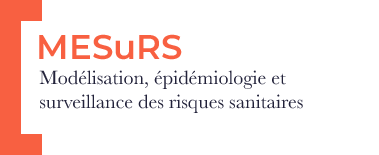Preventing iatrogenic HCV infection: A quantitative risk assessment based on observational data in an Egyptian hospital
Résumé
When compliance with infection control recommendations is non-optimal, hospitals may play an important role in hepatitis C (HCV) transmission. However, few studies have analyzed the nosocomial HCV acquisition risk based on detailed empirical data. Here, we used data from a prospective cohort study conducted on 500 patients in the Ain Shams hospital (Cairo, Egypt) in 2017 with the objective of identifying (i) high-risk patient profiles and (ii) transmission hotspots within the hospital. Data included information on patient HCV status upon admission, their trajectories between wards and the invasive procedures they underwent. We first performed a sequence analysis to identify different hospitalization profiles. Second, we estimated each patient’s individual risk of HCV acquisition based on ward-specific prevalence and procedures undergone, and risk hotspots by computing ward-level risks. Then, using a beta regression model, we evaluated upon-admission factors linked to HCV acquisition risk and built a score estimating the risk of HCV infection during hospitalization based on these factors. Finally, we assessed and compared ward-focused and patient-focused HCV control strategies. The sequence analysis based on patient trajectories allowed us to identify four distinct patient trajectory profiles. The risk of HCV infection was greater in the internal medicine department, compared to the surgery department (0·188% [0·142%-0·235%] vs. 0·043%, CI 95%: [0·036%-0·050%]), with risk hotspots in the geriatric, tropical medicine and intensive-care wards. Upon-admission risk predictors included source of admission, age, reason for hospitalization, and medical history. Interventions focused on the most at-risk patients were most effective to reduce HCV infection risk. Our results might help reduce the risk of HCV acquisition during hospitalization in Egypt by targeting enhanced control measures to ward-level transmission hotspots and to at-risk patients identified upon admission.
Domaines
Santé publique et épidémiologie| Origine | Publication financée par une institution |
|---|---|
| licence |



